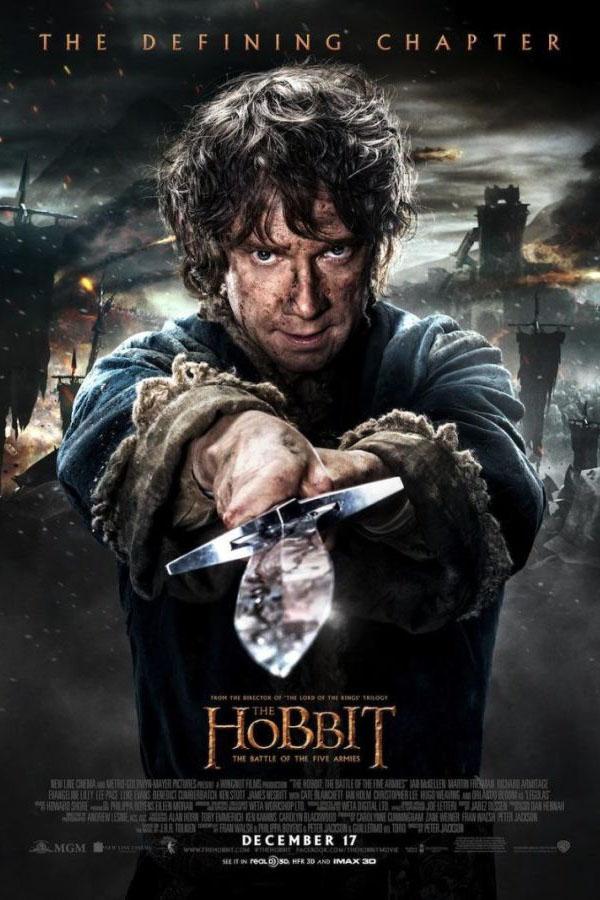‘Hobbit’ trilogy satisfies casual viewers but leaves book fans disappointed
“The Hobbit: Battle of the Five Armies” came roaring into theaters in December 2014, wrapping up the trilogy of Hobbit movies while still providing an opening for the “Lord of the Rings” story. This trilogy of Hobbit movies delivers everything a LOTR movies fan could hope for, but fails to deliver to fans of the book.
Our journey begins in the first movie with the hobbit, Bilbo Baggins (Martin Freeman), who lives a cushy, trouble-free life in his home beneath the ground, Bag End. His life is stirred up as the wizard Gandalf (Ian McKellen) arrives on his doorstep with a company of 12 dwarves, led by Thorin Oakenshield (Richard Armitage), heir to the throne of Erebor, the dwarven kingdom. They set out on a quest with reluctant hobbit in tow to reclaim the mountain of Erebor from the dragon Smaug (Benedict Cumberbatch) who guards the vast treasure hoard inside the mountain.
Director Peter Jackson once again plunges the audience into the fierce and wild lands of Middle Earth that we see in his earlier LOTR movies. Every scene and location is bursting with detail, even the dank and dark forest, Mirkwood. The short-term cravings for action are satisfied with LOTR style battles, though after seeing them once or twice, they appear awkwardly forced. The definite highlight of the trilogy lies in the second film, “The Hobbit: The Desolation of Smaug,” where we come face to face with the great Smaug himself, who looks every bit as real as the hobbit in front of him.
The problems, however, lie in the storyline. In the book “The Hobbit,” though the dwarves mention that they are seizing back their kingdom, their focus lies more on the precious gold and jewels that come with it. Though the movies satisfy fans of LOTR, they diverge greatly from the original plot of “The Hobbit.”
Three separate subplots are needlessly added: first, the blooming romance between dwarf Kili (Aidan Turner) and elf Tauriel (Evangeline Lilly), the latter of whom does not even exist in the LOTR and Hobbit books. This emerging romance in the second and third movies serves to create friction between Tauriel and suitor Legolas (Orlando Bloom), perhaps in attempt to downplay the always-victorious elves.
Second, we have the hunt for Oakenshield throughout the trilogy by the Pale Orc, Azog the Defiler (Manu Bennett). While it is true that in the novel, the questers are pursued by orcs, the movies seek to create a tragic backstory for the brooding Oakenshield.
The final unnecessary subplot is the rise of the Necromancer, who, though mentioned in passing in the book, has an exaggerated role in all three movies. While these subplots make interesting stories on their own, they tend to distract from the main plotline of the movies, and serve as filler for the flat stretches in between battles.
Despite the numerous flaws of the plot, one cannot help but appreciate the work that went into the beautifully detailed trilogy and the well-cast actors in their respective roles. While these movies may not be the highlight of Jackson’s directing career, they deserve credit as good movies in their own right.

Brynne has almost run out of clever biography ideas. She has recycled a couple lines from her previous biographies.
When she’s not slaving away over...

